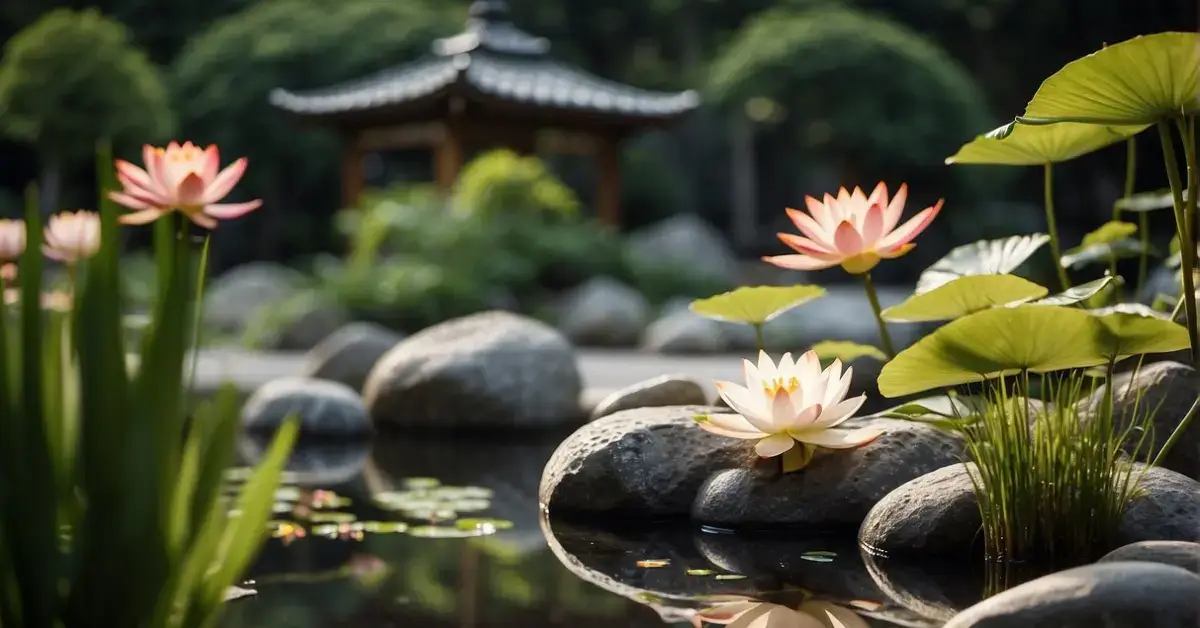Step into a tranquil sanctuary with a Peaceful Zen Garden, where harmony and serenity await amidst nature’s embrace. From carefully raked sand to lush greenery, explore how these gardens cultivate a sense of calm and mindfulness, offering a serene refuge from the stresses of everyday life and inviting you to connect with inner peace and tranquility.
Peaceful Zen Garden Pictures




















Peaceful Zen Garden Essentials
Creating a peaceful Zen garden is an exercise in harmony and simplicity. It’s about fostering a tranquil space where every element serves a purpose toward balance and mindfulness. Let’s explore how to bring these principles into your own personal oasis.
Understanding Zen Gardens
The essence of a Zen garden lies in its capacity to encourage relaxation and introspection. Originating in Japan, a Zen garden, or “karesansui,” which means dry landscape garden, embodies the minimalist approach to achieving a meditative environment. Simplicity and balance are at the core, inviting you to reflect and find peace amidst the precise arrangement of its elements.
Key Elements of Design
In designing a Zen garden, there are a few fundamental elements I consider essential:
- Rocks: These often symbolize mountains or islands, providing structure and points of contemplation.
- Sand/Gravel: Represents water, raked into patterns that suggest rippling waves or still ponds.
- Rake: A tool to create these patterns, allowing for the mindful practice of shaping and resetting the garden’s surface.
- Moss: Brings in lushness and greenery, adding softness to the landscape.
- Bamboo: Used for fencing or structures, it emphasizes natural beauty and strength.
- Water Feature: Even though traditional Zen gardens use raked gravel or sand to represent water, the gentle sound of an actual water feature can enhance the calming effect.
Beyond these elements, a focal point might be introduced to draw the eye and spirit toward a particular spot. Here’s a brief breakdown of how I prioritize design elements:
| Design Principle | My Approach |
|---|---|
| Balance | Carefully place rocks and gravel to create symmetry. |
| Simplicity | Use a minimalist approach, keeping details uncluttered. |
| Harmony | Select elements that complement the natural surroundings. |
Remember that it’s not just about what I put in, but also what I leave out. The empty space, or “ma,” is just as important for creating a peaceful Zen garden—it allows the garden to breathe and gives your thoughts room to wander.
I always ensure that every rake line I draw in the sand and every rock I position is intentional, to guide you to an effortless journey through visual tranquility. Through deliberate, thoughtful design, I help cultivate an atmosphere of serenity and undisturbed balance.
Cultivating Peace

In my pursuit of peace, I’ve discovered that the core of cultivating serenity in a Zen garden lies not just in its visual appeal, but in the thoughtful incorporation of specific elements and the ongoing commitment to tranquility through maintenance.
Elements That Foster Serenity
In my own Zen garden, I focus on calming elements that facilitate meditation and mindfulness. I use smooth stones laid out to invite chi, or energy flow, creating a sense of balance. Here is a list of key components that I include:
- Plants and Trees: The presence of greenery like moss and bamboo encourages a connection with nature and enhances focus.
- Water Features: A simple bowl-shaped fountain or a small stream introduces soothing sounds, aiding in contemplation and calm.
- Rock Gardens: Arranging rocks and sand in patterns symbolizes the ripples in the water and promotes an atmosphere for relaxation and unwind.
Maintenance and Upkeep
Caring for my oasis involves a routine that’s surprisingly low-maintenance, yet deeply rewarding. I allocate time each week for:
- Raking Sand: The act of raking into precise patterns is, for me, a form of meditation in itself.
- Weeding and Pruning: Regular weeding and careful pruning of plants prevent overgrowth and maintain the minimalist aesthetic.
By dedicating these efforts towards maintenance, I find the repetitive tasks to be a form of serenity and mindfulness, turning upkeep into a fulfilling ritual rather than a chore.
Visual and Symbolic Features

In a Zen garden, each element is chosen with intention, contributing to a narrative that invokes serenity and reflection. Let’s explore how nature’s symbols and the interplay of movement and stillness are integral to the design.
Incorporating Nature’s Symbols
In my years of embracing Zen elements in garden spaces, I’ve seen the profound impact of integrating natural symbols. Rocks and pebbles often represent mountains and islands, evoking a sense of steadiness and solitude within the expanse of raked gravel that mirrors waves. A carefully chosen palette of greens from bamboo and trees, along with colorful leaves and plants, enriches the sense of tranquility. By purposefully including these symbols, a Zen garden reflects the broader natural world, encouraging contemplation and inner peace.
Creating Movement and Stillness
A Zen garden is a dance of contrasts. I find that there’s great beauty in designing spaces that balance kinetic elements with stillness. The gentle sound of water from minimalist features gives life to the garden; it could be a simple bamboo fountain or a thoughtfully placed pond. Surrounded by still, moss-covered stones or the hardscaping of pathways and bridges, the movement of water invites a dynamic energy. This interplay mirrors life itself—always in motion, yet grounded in moments of profound calmness. By designing with these principles in mind, we create landscapes that are not just seen but deeply felt.
FAQ – Peaceful Zen Garden

What is the point of a zen garden?
The primary purpose of a Zen garden is to cultivate a space that embodies tranquility and simplicity. They’re designed to represent natural landscapes in miniature form, primarily using rocks, gravel, and sometimes sparse vegetation, encouraging contemplation and mindfulness.
Are Zen gardens calming?
Yes, Zen gardens are intended to be calming. They provide a serene environment where one can escape the busyness of everyday life. The simple act of raking the gravel in a Zen garden can be a meditative practice, promoting relaxation. Carefully selected elements like those in a Teleflora’s Peaceful Zen Garden arrangement can enhance the calming ambiance.
Is a Zen garden good for anxiety?
Zen gardens can be effective in managing anxiety. They are spaces of minimalism and calm that can help in reducing stress and anxiety levels. Their design philosophy aligns with mindfulness practices, which are known to have positive effects on mental health. Engaging with elements such as raked gravel and thoughtfully placed rocks can serve as a grounding exercise, which is often recommended for anxiety relief.
If you liked this blog post about the topic: Peaceful Zen Garden, don’t forget to leave me a comment down below to tell me about your experience with it. Or have a look at my other articles:
- Bonsai Zen Garden: Creating Peaceful Miniature Landscapes 2024
- Indoor Zen Garden: 20 Ideas For Creating Oasis Of Calm 2024
- Desert Zen Garden: Creating Serenity in Arid Spaces 2024
- Bamboo Zen Garden Ideas: My 20 Favorites 2024
- 20+ Cherry Blossom Zen Garden Inspirations You Have To See 2024
Feel free to also check out our other Articles from the category “Zen Garden“ and don’t forget to follow us on Pinterest.

